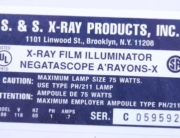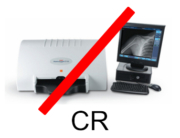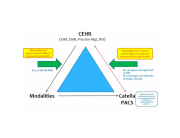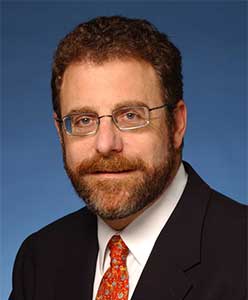Last Thursday and Friday the FDA conducted the above workshop. I listened to about half of it on the webcast and although this note is in no way definitive, I wanted to give you my perspective on what I heard. In the next few weeks there are certain to be a number of detailed articles and I plan to summarize them and send you the links. In addition, there was a real-time, typed transcript of the proceedings, so I assume that this will also be available to read.
First, the FDA reported on its website that all spaces for attendance were reserved and indeed the live streamed pictures appeared to show a packed meeting room.
The agenda was divided into a number of discussion points:
Day One (Thursday, October 27, 2016)
- Welcome and Opening Remarks
- History of FDA Involvement with Refurbishing, Reconditioning, Rebuilding, Remarketing, Remanufacturing and Servicing of Medical Devices Performed by Third-Party Entities and Original Equipment Manufacturers
- Working Definitions and Overview of Stakeholder Perspectives
- Stakeholder Presentations
- Panel Discussion 1: Benefits and Risks Associated with Refurbishing, Reconditioning, Rebuilding, Remarketing, Remanufacturing and Servicing Activities
Day Two (Friday, October 28, 2016)
- Panel Discussion 2: Characteristics of Good Refurbishing, Reconditioning, Rebuilding, Remarketing, Remanufacturing and Servicing Entities
- Panel Discussion 3: Challenges Stakeholders Face in Performing High Quality Refurbishing, Reconditioning, Rebuilding, Remarketing, Remanufacturing and Servicing Activities
- Panel Discussion 4: Current Best Practices and Future Recommendations
- Closing Remarks
The attendees appeared to fall into the following groups:
- OEM’s and their industry group representatives
- Independent Service Organizations (ISO’s) and their industry group representatives
- Independent Parts Providers and their industry group representatives
- Hospital representatives
- Biomedical engineers, either representing themselves or the medical practices they worked for (including hospitals and hospital chains)
- Industry consultants
- FDA representatives
The testimonials, discussions and questions and answers followed predictable patterns. However, I felt that the major themes were deeply explored and that if the FDA finally decides there is an issue to address, there will a number of paths to explore.
As I did not have the luxury of listening to the full two days, please consider my comments as preliminary, at best.
 The OEM’s themes included the need to have greater control since they also have an obligation to report any issues involved with their equipment during their life cycles. Without knowing who, with what and how their equipment was being serviced and repaired, this task was very difficult. In addition, they felt that those working on their equipment should be trained to the level of their own employees and be governed by the same quality control requirements as the OEM. Finally, they expressed concern about having to provide many of the service tools (including software) to third party servicers as these are considered intellectual properties that they have a right to be protect.
The OEM’s themes included the need to have greater control since they also have an obligation to report any issues involved with their equipment during their life cycles. Without knowing who, with what and how their equipment was being serviced and repaired, this task was very difficult. In addition, they felt that those working on their equipment should be trained to the level of their own employees and be governed by the same quality control requirements as the OEM. Finally, they expressed concern about having to provide many of the service tools (including software) to third party servicers as these are considered intellectual properties that they have a right to be protect.
The ISO’s response was also predictable. First they questioned why the inquiry that led to the workshop was even necessary. The FDA representative asserted several times that the agency’s work is always based on evidence and facts. The ISO’s believe that there is no evidence that their work or the parts they use have ever been shown to have led to any meaningful number of concerns. They indicated they (and all that belonged to the major industry groups) followed strict quality control systems that provided the same oversight as used by the OEM’s. Finally, they indicated that as relations between ISO’s and OEM’s have cooled it has been harder to perform their roles, which they claimed brought meaningful financial and workflow benefits to their clients. They questioned why service manuals, schematics and service software should be considered intellectual property and why these items were not, at least, made available to equipment buyers and their designated service personnel (which could include the ISO’s).
This last point perhaps provided a glimmer of a compromise between all the parties. One OEM representative (or perhaps it was an OEM industry group representative) suggested that perhaps if there was clear language that protected the OEM’s IP and the service personnel were trained by the OEM’s and followed their prescribed methods, then the equipment owner could have access to the IP “protected” items for use by themselves or their designated representatives.
Finally, the issue of motivation was mentioned, i.e. the OEM’s had a strong financial insentive to close down ISO’s and this FDA action was a new battle in that war.
The Parts Providers followed a similar line of discussion as the ISO’s. Towards the end of the meeting one speaker identified himself, I believe, as the founder of a parts group that was later purchased by a large OEM. He questioned the legitimacy of the OEM’s argument in that after his business was purchased, the large OEM continued to run the parts division nearly exactly as it had been run before.
I felt the hospital representatives and biomed professionals, as representatives of the consumer group, were most important in this discussion. Their concerns included patient safety, equipment up-time, parts and service availability and costs, just to name a few. In all cases, they felt that they should be left with the option to choose how to resolve all of these issues. Among the points I found interesting were the following:
- The largest number of their emergency service needs, such as during an operation, were simple issues like disconnected or incorrectly connected cables, systems needing restarts, and other similar issues. Serious issues seem to be the extreme exception.
- Equipment owners often are not provided with all of the documentation they need to do necessary acceptance and compliance testing, much less routine maintenance. This is a frequent frustration and, they often believe, a safety concern.
- OEM’s are not always able to provide timely service, nor do they always have the parts necessary to repair equipment. This creates important roles for both the in-house biomed and the ISO.
- Cross-trained service providers, whether they be in-house or contracted groups, can reduce the burden of providing service. In addition, there can be significant cost advantages.
- Each institution can set the standards with which outside service groups, including the OEM’s, need to comply. Several times, speakers made it clear that any individual or firm providing poor service was quickly removed from their vendor lists.
All generally agreed that if there was a problem posed by third-party providers, it was not necessarily from the groups represented at the workshop. They all agreed that it was important to have good quality standards and systems as the bedrock of their work. They agreed that there may be firms or individuals doing work not based on quality standards, and that a review of that issue was always a positive step. However, most participants (other than the OEM’s) questioned the value of more federal regulations as long as the participants had meaningful self-imposed standards as might, for example, be governed by membership in trade associations.
In their closing remarks, the FDA representative underscored that this workshop was an important step in their data gathering. They stated that only facts would be considered when making any recommendations and said that both the week’s meeting and the nearly 200 written submittals were the start of their fact-finding process. They implied there was more work to be done and that there would be future opportunities for industry to participate.
As I find more in depth articles over the next week, I’ll try to put together a list of links for your further reading. These will also tell us how accurate my comments are from the portions of the meeting I was able to listen to.
As always, your comments are welcome.








I find it interesting that the OEM’s feel that the ISO’s engineers should have the same level of training as the OEM’s while they refuse to provide them with that level of training. In many instances, the OEM does not even provide ISO’s with the most basic level of training and software to perform QA tests and procedures. And yet they complain to the FDA that they are liable for any safety related issues that may develop. The service software that is provided to ISO’s by some OEM’s is so limited and hobbled as to be almost worthless for any meaningful troubleshooting or calibrations. I see little justification for the OEM complaints of having to share intellectual property with ISO’s when all the “good stuff” is kept in-house anyway. In short, the OEM’s have the ability to address and correct almost all the concerns they have with independent service providers. They simply choose not to, and purely for economic reasons.
I am OEM trained, and I now own my own ISO, and your remarks are dead on. You cannot complain about liability and training while at the same time refusing to train or provide equal Tools to the ISO in order for us to do an equal job.